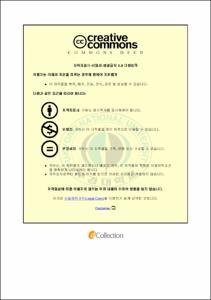Biological analysis on coralline algae and periostracum of blue mussel for antifouling material
- Abstract
- We plan to search antifouling materials from the coralline algae to prevent biofouling damage to ship or marine structure. Bio-mimic materials would become an environmental-friendly and no harmful source to the marine application. The coralline algae shows one of main reasons of algal whitening in barren ground where has no seaweed growth, and also shows allelopathic effect against attachment and germination of seaweed spores. Bio-mimic materials of the coralline agae might be usable as antifouling agents against seaweed at least. Gene analysis, viability assay, treatment of calcification inhibitors, and related researches will be done in this study.
The disappearance of seaweed flora in some rocky areas, known as algal whitening, barren ground, coralline flats, or deforested areas, is associated with some species of coralline algae. To determine the biological characteristics of a representative species of crustose coralline alga, 18S rDNA gene was sequenced to identify the genus Lithophyllum. By morphological and distributional characteristics, it is deduced to L. yessoense. Measuring viability using triphenyl tetrazolium chloride showed highly viability from December to February. Cultural conditions of 16 °C, a 16 hr light:8 hr dark cycle, and 30 µE m-2s-1 light intensity were optimal for maintaining the viability of the alga for up to 5 days. The fatty acids included 9.7% ω-3 eicosapentaenoic acid. Scanning electron microscopy of the surface structure revealed round craters about 3.6 µm in diameter, covered with rough irregular and angular polygon-shaped structures about 1.0 to 3.7 µm in size. Biomimetic coralline alga based on the composition and structure might become an environmentally friendly antifouling material against the attachment of soft foulants.
The decrease in the seaweed flora in some rocky areas, known as algal whitening or barren ground, is associated with some species of coralline algae. To determine the biological characteristics of a representative species of branched coralline alga, the number of medullary tiers was counted and ranged from 12 to 16. The 18S rDNA, psbA, and rbcL genes were used to confirm the identification of Corallina pilulifera. Measuring viability using triphenyl tetrazolium chloride showed highly viability from December to January. Cultural conditions of 16 °C, a 16 h light:8 h dark cycle, and 40 µE m-2s-1 light intensity were optimal for maintaining the viability of the coralline alga for up to 3 days. The fatty acids included 31.4% ω-3 eicosapentaenoic acid. Scanning electron microscopy of the surface structure revealed unique round wells about 7.9 ± 1.3 µm in diameter.
The addition of calcification inhibitors was found to regulate the viability of cultures of the coralline alga Lithophyllum yessoense and Corallina pilulifera. The viability was quantitated using a triphenyltetrazolium chloride assay, and the eight of different calcification inhibitors were tested. Fe-citrate and FeCl2 inhibited viability, and dichloromethylenediphosphonic acid increased viability. The Fe-citrate, which had the strongest inhibitory activity, decreased viability to 74 and 12% that of the control following addition of 1 mM or 10 mM of culture media of L. yessoense, respectively. Even C. pilulifera culture media, Fe-citrate inhibited viability to 63 and 44% that of the control following addition of 1 mM or 10 mM. The Fe-citrate suppressed L. yessoense and C. pilulifera viability the most.
A study was made to investigate possible formation by the periostracum of the mussel Mytilus edulis of antifouling substances against the settlement and germination of spores of Porphyra suborbiculata. The shell coating known as the periostracum, is indicated as a possible physical and chemical antifouling defense component. The periostracum was separated from the shell and extracts of the periostracum obtained by extraction with three solvents. Considerable activity gainst monospores was shown by ethyl acetate and dichloromethane extract. The microtopography of the shell surface was measured using scanning electron microscopy (SEM) which revealed homogeneous and ridged surface of periostracum. The periostracum surface has also shown considerable activity against monospores. This indicates that in mussels P. suborbiculata the periostracum possesses a generic anti-settlement property, at least against spores settlement and germination.
- Issued Date
- 2013
- Awarded Date
- 2013. 8
- Type
- Dissertation
- Publisher
- 부경대학교
- Affiliation
- 대학원
- Department
- 대학원 생물공학과
- Advisor
- 홍용기
- Table Of Contents
- List of Table iii
List of Figure iv
Abstract vi
Chapter I General Introduction 1
Chapter II Biological characteristics and tissue structure of a crustose coralline Lithophyllum Alga
Abstract 9
Introduction 10
Materials and Methods 11
Results 14
Discussion 17
References 26
Chapter III Biological characteristics and tissue structure of the branched coralline Alga Corallina pilulifera
Abstract 30
Introduction 31
Materials and Methods 32
Results 36
Discussion 38
References 47
Chapter IV Effect of calcification inhibitors on the viability of the coralline algae
Abstract 52
Introduction 53
Materials and Methods 56
Results 58
Discussion 59
References 65
Chapter V
Antifouling activity of extracts of the periostracum of the mussel Mytilus edulis
Abstract 68
Introduction 69
Materials and Methods 71
Results 74
Discussion 76
References 83
Summary in Korea 85
Acknowledgements 87
- Degree
- Doctor
- Files in This Item:
-
-
Download
 Biological analysis on coralline algae and periostracum of blue mussel for antifouling material.pdf
기타 데이터 / 1.97 MB / Adobe PDF
Biological analysis on coralline algae and periostracum of blue mussel for antifouling material.pdf
기타 데이터 / 1.97 MB / Adobe PDF
-
Items in Repository are protected by copyright, with all rights reserved, unless otherwise indicated.